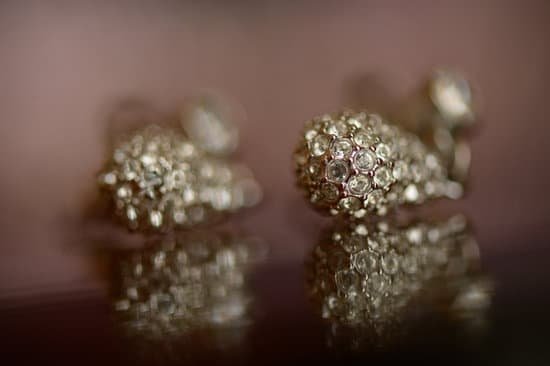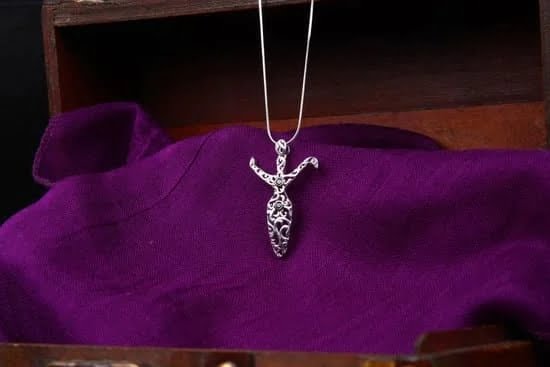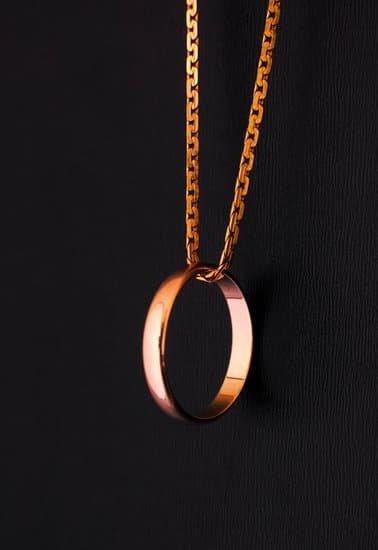Introduction
Plated jewelry is jewelry items that have a thin, outer layer of a precious metal like gold. The plating is applied over a base layer of less expensive material or metal. This makes the jewelry piece appear to be made out of solid gold at a fraction of the cost. The amount and quality of plating vary depending on the craftsmanship and skill. Plated jewelry has become increasingly popular as an affordable and stylish way to wear beautiful pieces of jewelry.
Advantages:
One advantage to using plated jewelry is that it saves money compared to buying pure gold or other precious metals outright. In addition, plated jewelry can last for many years with proper care. With constant maintenance and cleaning, plated pieces can even stand up to daily wear in humid environments without fading or tarnishing quickly. Furthermore, plated jewelry lends itself well to unique designs due to its cost-efficiency and range of colors, from yellow gold to rose gold finishes.
Disadvantage:
One disadvantage to wearing plated jewelry is that it does not last forever with everyday use. Due to its thin coating, the plating can easily fade or chip away with regular wear if proper care tactics are not used on the item regularly. Additionally, some users may develop allergic reactions when their skin comes into contact with cheaper metals commonly used as bases for the plating process (such as nickel). And finally, some people may feel that only solid-gold or pure-metal pieces are suitable in terms of luxury value and craftsmanship, therefore discounting the long-term potential of high-quality plating materials regardless of budget considerations
History of Plating Jewelry
Plated jewelry has been around since the ancient Egyptians, who used metals like gold to decorate their jewelry. The method of plating was most likely developed by mixing a powder-like element called flux with the metal to create an alloy, which could be deposited onto the surface of the desired object. Over time, this method of decoration evolved into a more complicated process involving the use of different metals and chemicals to create different finishes. Today, plating is used in the manufacture of pieces like necklaces and rings and even watches. Plating can give jewelry a certain characteristic charm and durability, while reducing its cost. It is common for gold and silver items to come in both cladded or plated versions. Plated versions are less expensive than solid versions because they contain only a thin outer layer of precious metal over other materials like brass or steel. While it may appear that plated jewelry lacks longevity compared to solid ones, this isn’t always true as long as proper maintenance such as regular cleaning and avoiding contact with chlorine is observed.
Different Types of Plating
Plated jewelry is jewelry made of a base metal, such as brass or stainless steel, and then plated in a very thin layer of gold or other precious metals like platinum. Plating gives the appearance of a higher quality piece of jewelry without the associated high cost. It is also often used to restore old pieces and give them an updated look.
Different types of plating are available for plated jewelry, including gold plating, silver plating, rose gold plating, chrome plating, gunmetal coating and rhodium-plated finishes. Gold plating creates a rich yellow color that is commonly seen in delicate jewelry designs. Silver plating gives out pieces a bright white color over the base metal for a classic look. Rose gold adds subtle warmth and richness to any design with its pinkish hue adding opulence. Chrome coating gives any piece a cool blue-gray finish while gunmetal’s charcoal shade offers a distinct aesthetic appeal. Last but not least, rhodium-plated finishes create a discreet shine on jewelry which can make it look timelessly elegant.
Overview of Plating Process
Plated jewelry is jewelry created by adding a thin layer of metal to another metal or material, typically using an electrochemical process. The method is also known as electroplating and has been around since the 1840s. The plating process starts with a neutral solution containing positively charged ions called cations. These cations are attracted to the workpiece (the material or jewelry being plated) that has been dipped into a negative charge, forming a chemical bond between them. The cations then bond to create a protective coating of electrically-bonded metal called the plated layer. During this process, the cations can be composed of any number of different metals, such as copper, nickel and palladium.
To enhance the look of the jewelry, colors may also be added through subsequent treatments such as oxidation, vapor deposition and other processes like electrolytic plating (dipping in chemicals). Utilizing different alloys of metals can also produce various protective coatings for increased durability. Finally, for added protection and luster, many pieces are covered with a clear epoxy sealant or lacquer finish on top of the plated layer. This will help lock in the color so it won’t fade over time due to wear and tear. Plated jewelry allows artisans to create unique pieces that are beautiful yet affordable items that can stand up well to everyday use.
Examples of Plated Jewelry
Plated jewelry is jewelry pieces made with a thin outer layer of metal applied to the surface of another type of base metal. The process by which this is done is called plating and uses electrolysis, in which the metal being added to the piece is placed in an electrically charged bath containing special chemicals that help it attach to and adhere to the base metal. Plating can be found in many forms, such as gold-plating, silver-plating, copper-plating, rhodium-plating, and palladium-plating.
Examples of plated jewelry include gold necklaces with sterling silver chain links, sterling silver earrings finished with a vermeil (gold plate over silver) finish or rose gold accents, bracelets with brass bases and a yellow gold plating finish. In addition to these items made from traditional metals such as gold, sterling silver and brass there are also more modern options such as electroforming (a technique involving electricity used to coat items made from other materials). Such examples include necklaces consisting of copper wire coated with a thick silver layer or pendants featuring clay centers completely covered in silver for extra durable wear. Plated jewelry can be a great way for those on a budget to still acquire stunning pieces at more affordable prices!
Advantages and Disadvantages of Plated Jewelry
Plated jewelry is jewelry that has been coated in a thin layer of metal, often gold or silver. The thickness of the plating can vary greatly, ranging from a few microns up to 10 or more microns. Plated jewelry can look just as beautiful as solid metal jewelry, but it’s much more affordable because it uses far less material.
The main advantages of plated jewelry are its affordability and design flexibility – as it is so much cheaper than solid metal jewelry, many pieces include elaborate designs which would not be possible with solid metal. Another advantage is that plating can give a piece an antique or vintage look which may appeal to some people.
A disadvantage associated with plated jewelry, however, is that the coating wears away over time and the underlying metal will eventually show through. It is also recommended to take extra care when cleaning and caring for plated pieces to avoid scratching the coating off of the underlying metal. Lastly, depending on how well it was made, some parts may have very thin layers of gold or silver and this could also lead to wear down quickly over time if not treated carefully.
Care and Maintenance of Plated Jewelry
Plated jewelry is a type of jewelry made by adhering a layer of metal to the surface of another material. The most common type of plated jewelry is made from sterling silver with either gold or rhodium plating. This act of “plating” provides an attractive, glossy sheen on the jewelry’s surface that can last for years if taken care of properly. In addition to being aesthetically pleasing, plated jewelry can often offer a cost-effective alternative to purchasing more expensive pieces made from solid metals such as gold or platinum.
When it comes to caring for and maintaining your plated jewelry, there are some important steps you should take in order to protect its condition and extend its lifespan. One of the best ways to protect your piece is to avoid contact with perfumes, oils and lotions as these have been known to reduce the life expectancy of any type of jewelry. To clean the piece, simply use warm soapy water and finish off by buffing lightly with a soft cloth until dry. It is also recommended that you regularly check your piece for any signs of tarnishing or peeling which may occur over time due to environmental conditions or friction caused daily wear and tear. Lastly, it is important that you store your piece in an airtight container when not wearing it in order to prevent oxidation and further damage.
Different Finishes and Their Effects
Plated jewelry is jewelry that has been specially coated with a thin layer of precious metals, such as gold and silver. Plating allows designers to use more affordable base materials while still achieving the look of expensive metals. The process of plating involves applying the metal via electrochemical deposition and chemical reduction so that it adheres to the surface of the piece of jewelry.
When selecting plated jewelry, it’s important to consider different finishes and their effects on each piece. Rhodium plating, for example, is often used to give a white appearance to sterling silver jewelry – this prevents tarnishing and gives items an extra shine. Gold plating can be used to add warmth or extravagance to pieces and can range from 14K yellow gold through rose gold options all the way up to 24K yellow gold. In addition, black rhodium plating adds an edgy, modern feel which works well when set against semi-precious stones such as rubies or diamonds. Gunmetal finish offers a matte grey color that also offers a cool neutral tone good for every day wear. Finally, antiqued finishing techniques are popular as they add texture and dimension by highlighting recesses in the design by adding depth with lighter colors such as glossy warm bronze or matte cool steel blue. No matter what look you’re going for with your finished products there will be an appropriate plating technique to achieve the desired effect!
Popular Pieces of Plated Jewelry
Plated jewelry is jewelry pieces that have a thin layer of precious metal such as gold, silver, or platinum applied over their surfaces. Plating gives the appearance and shine of a more expensive piece of jewelry and can make an inexpensive base metal look much more valuable. While plating does help extend the lifespan of the jewelry it does eventually wear away if not carefully cared for.
Popular pieces of plated jewelry include earrings, necklaces, rings and bracelets. Plated jewelry often features beautiful crystal elements perfect for any occasion from work to a night out on the town. Plated jewelry is also very popular for bridal parties and occasions like baptisms or birthday presents as well. Other popular choices are layered necklaces with charms or pendants made in sterling silver and gold plating often with simulated stones adding some twinkle to any outfit. For men there are many cufflinks in combination metals set with intricate designs where the gold or silver plating adds extra shine.
Expert Tips and Advice on Choosing Plated Jewelry
Plated jewelry is an economic way to reap the benefits of wearing fashionable jewelry items, such as rings, necklaces and bracelets. Typically made from a base metal like copper or brass, plated jewelry is then electroplated in either gold, silver or sometimes even platinum. Plating methods vary depending on your desired effect and can produce a range of effects that resemble the look and feel of a much more expensive piece of jewelry. The challenge lies in selecting quality plated jewelry pieces which will have lasting appeal as they are not necessarily long term investments. Here are some expert tips and advice on choosing the right plated jewelry.
1. Recognize Quality – There is nothing worse than investing in cheaper plated jewelry only to find it fades or tarnishes quickly after purchase. When you’re out shopping for plated jewelry options make sure you check what type of coating is used: check the thickness, analyze wear spots and observe if the coloration is consistent throughout the piece. 4-5 layers of high quality plating should be expected before fading starts to occur.
2. Understand Plating Processes – Different types of metals require different plating processes which affect price; usually real gold/silver platings will cost you more as opposed to non-precious platings such as rose gold or rhodium-coating finishes i.e silver ring with a black finish look being applied via ionic bonding (an electrochemical process). This helps create a smoother looking finish when compared against heat processing methods which are used for brass or copper based metal products as well as providing improved lasting power (on average 1-2years).
3. Consider Attached Features – Jewelry attachments easily add value to your piece; they make it look more luxurious by adding additional sparkle, weight & dimensionality? Consider setting stones into your piece: colorful CZ’s can shine just like diamonds for fractional costs! Additionally consider other dressing accessories like charms, tassels & cuffs which attaches will provide additional flair & character to even simplest designs!
Conclusion
Plated jewelry is a type of jewelry consisting of a base metal that is coated with an outer layer of a more valuable metal. This gives the appearance and feel of higher-quality jewelry, without the hefty price tag. Plated jewelry is popular for its affordability and can be used to mimic the look of gold, silver, or any other precious metal, while remaining significantly less expensive. Despite the cost benefits of plated jewelry, it will not last as long as genuine precious metals, due to its outer coating wearing away over time. As such, it can be important to care for plated jewelry properly in order to extend its lifespan and protect against discoloration. With proper handling and cleaning practices, plated jewelry can offer an attractive and cost-effective choice for people looking for a piece of stylish accessory that won’t break the bank.

Welcome to my jewelry blog! My name is Sarah and I am the owner of this blog.
I love making jewelry and sharing my creations with others.
So whether you’re someone who loves wearing jewelry yourself or simply enjoys learning about it, be sure to check out my blog for insightful posts on everything related to this exciting topic!





